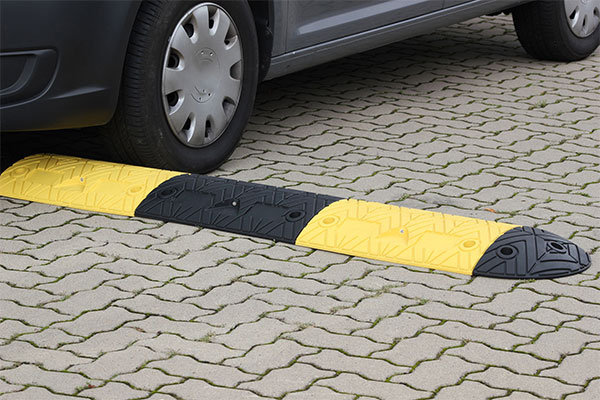Do Speed Bumps Damage Cars?
Speed bumps, those ubiquitous road features, often elicit mixed feelings among drivers. While they serve a critical purpose in reducing speed and enhancing road safety, there is a common concern among motorists: do speed bumps damage cars? In this article, we will debunk the myths surrounding this topic and provide you with a clear understanding of the potential impact of speed bumps on your vehicle.

The Purpose of Speed Bumps
Before delving into the question of whether speed bumps can harm your vehicle, it’s essential to understand their primary purpose. Speed bumps are traffic calming devices designed to slow down vehicles, particularly in areas where excessive speed poses a safety hazard. They are often strategically placed in residential neighborhoods, school zones, and parking lots to encourage drivers to drive at safe, controlled speeds.
Common Myths About Speed Bumps
Myth 1: Speed Bumps Cause Significant Damage
One of the most prevalent myths is that speed bumps can cause substantial damage to a vehicle’s suspension, tires, and other components. However, speed bumps are typically designed and constructed to minimize potential harm. The majority of speed bumps are installed with a gentle slope on both sides, allowing most vehicles to pass over them without sustaining damage. For the average vehicle, properly maintained speed bumps should not cause significant harm.
Myth 2: Speed Bumps Lead to Alignment Issues
Another common misconception is that speed bumps can throw a vehicle’s alignment out of whack. While it is true that hitting a speed bump too fast and forcefully can potentially affect your car’s alignment, this is not the fault of the speed bump itself. It’s more a result of the driver’s actions. Responsible and cautious driving is key to avoiding alignment issues.
Myth 3: Speed Bumps Damage the Undercarriage
Some believe that speed bumps can scrape and damage the undercarriage of a vehicle. In reality, this happens only in rare cases when a vehicle is extremely low to the ground or if the speed bump has been poorly designed or maintained. Properly constructed speed bumps should not pose a risk to the undercarriage of most vehicles.
Potential Hazards of Speed Bumps
While speed bumps are generally not designed to damage cars, it’s essential to exercise caution to minimize any potential harm:
- Slow Down: The key to avoiding damage is to approach speed bumps at a slow, controlled speed. Reducing your speed allows your vehicle’s suspension to absorb the impact more effectively.
- Maintain Proper Tire Pressure: Keeping your tires properly inflated can help absorb the shock from speed bumps.
- Choose the Right Line: Drive over the speed bump carefully, aiming for the highest point if it’s a well-designed bump.
- Drive Vehicles with Adequate Ground Clearance: If you frequently encounter speed bumps on your daily route, consider driving a vehicle with sufficient ground clearance to minimize the risk of scraping the undercarriage.
Conclusion
Speed bumps are not designed to damage vehicles. When approached responsibly and at an appropriate speed, they should not pose a significant threat to your car. While there may be exceptions, these are often attributed to driver behavior, vehicle type, or the quality of the speed bump itself. The key to protecting your vehicle and ensuring your safety is to drive cautiously and mindfully over speed bumps while adhering to recommended speed limits in these areas.

